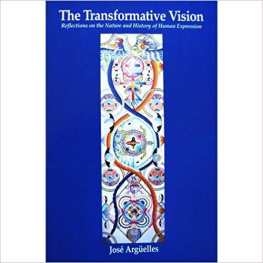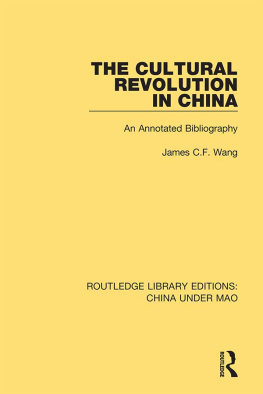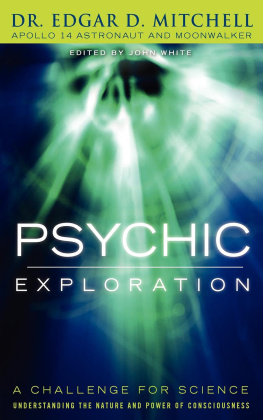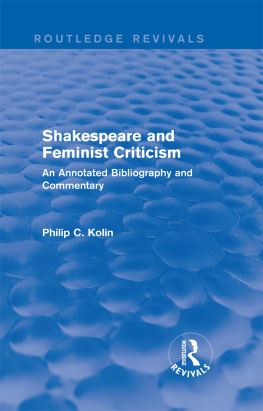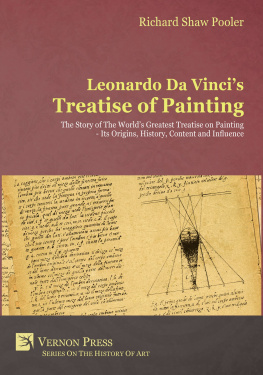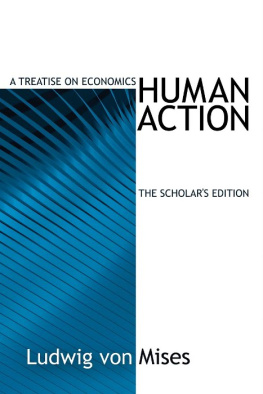The
Transformative
Vision
Reflections on the Nature
and History of Human Expression
by Jose A. Arguelles
[Excerpts-Bibliography]
SHAMBHALA
Boulder & London
1975
SHAMBHALA PUBLICATIONS, INC.
1920 13th Street
Boulder, Colorado 80302
1975 by Jose A. Arguelles
ISBN 0-87773-055-5
LCC 74-75096
Designed by Hal Hershey
Frontispiece by Armando Busick
Distributed in the United States by Random House and in Canada by Random House of Canada Ltd.
Distributed in the Commonwealth by Routledge & Kegan Paul Ltd. London and Henley-on-Thames
Printed in the United States of America
Contents
Introduction
1
ONE
The Dialectical Setting:
Human Hemispheres and Planetary Poles
5
TWO
Art and Consciousness: From Cosmic Myth to Single Vision:
THREE
The High Renaissance Vision:
The Formation of a Literary Artistic Elite
FOUR
The Academization of Single Vision
41
FIVE
The Birth of History
51
SIX
Revision, Style, and Revolution
SEVEN
In Search of a Hero: Romantic Quest, Fractured Vision
71
EIGHT
William Blake: The Hero as Prophet
NINE
Caricature as Truth: Seeing Beyond Official Truth
93
TEN
The Receding Landscape:
The Seeds of Ecological Consciousness
103
ELEVEN
Drawing with Light: Photography, Reality, and Dream
116
TWELVE
Dream Light on the East: Visions of the Seer-Poets
126
THIRTEEN
Revolution of the Eye, Revolution of the Mind
140
FOURTEEN
The Establishment of the Avant-Garde:
The Fugitive and the Real
150
FIFTEEN
The Outcast Vision: Van Gogh and Gauguin
164
SIXTEEN
Abstraction and the Techno- Environment
177
SEVENTEEN
The Aesthetic of Madness I
191
EIGHTEEN
The Aesthetic of Madness II
204
NINETEEN
Art and Alchemy: The Great Return
219
TWENTY
Split AdamSplit Atom: Art in America
234
TWENTY-ONE
At the Zero Point: The Art to End All Art
TWENTY-TWO
In the Shadow of the Apocalypse
TWENTY-THREE
Art as Internal Technology:
The Return of the ShamanThe Descent of the Goddess
TWENTY-FOUR
The Transformative Vision: Catharsis and Individuation
APPENDIX A
The Development of the Holocene Era
APPENDIX B
The Ascent of the Jaguar
Notes
Bibliography
Acknowledgements
Index
A NOTE ABOUT ILLUSTRATIONS
This is essentially a book about inner vision. In order not to detract from, and even to enhance this focus of attention, it was finally decided not to reproduce any of the works of art which are described and spoken of throughout the text. In cases where the reader may wish to become more familiar with certain of the works described. I have provided an ample bibliography which includes numerous illustrative texts.
Introduction
WHAT you are about to read is the product of an adventure that has been years in the making. Since I was a child art has been my vocation and my love. As a young man in the late 1950's, I painted vigorously in the manner of the then-popular abstract expressionists. It seemed natural to me to fling out my energies in blazing swirls across the canvas. I thought that this was what art was about: to express one's deepest feelings with ardor.-Besides energy I apparently exhibited some talent and was placed in the advanced painting class in my last year as an undergraduate student. With me was one other student who had also been painting in the manner of the abstract expressionists. One day, to my very great surprise, my fellow student came in with a canvas not at all like those he was accustomed to painting. This canvas was painted in simple flat colors arranged in a few quasi- geometric forms. "What is that?" I asked him, somewhat amazed at his sudden change. "It's hard-edge," he replied. "Haven't you heard? It's the latest style." I was dimly aware of "hard-edge" from the art journals, but I was stunned by the notion that art might be simply style, like clothes to be taken off or put on without the slightest regard to the inner feelings. If this wa s what the art-game was about, I wanted nothing to do with it. But since art had been the center of my existence, I was reluctant to give it up. I was left with the basic problem of how to reconcile art and life.
I reached this impasse in 1960, and for the next six years I produced little as a painter except an occasional morose self-portrait and a lot of absent minded doodling. But the problem that had confronted me in that advanced painting class would not leave me, and I vowed to resolve it. Since I could not paint in full conscience without first understanding myself and the problem of art in greater perspective, I enrolled as a graduate student in the history of art. The rote procedure of graduate training was redeemed for me by a deep and abiding feeling that somehow it was the way. What mattered to me was not the memorization of categories and the cataloging of information, which were easy enough, but the occasional glimpses I received of the tortuous route of the spirit as it manifested in artifact, and the intuition of certain thinkers whose writing I was fortunate enough to become acquainted with.
The problem of art, I slowly discovered, was inextricably involved with the problem of history, and the problem of history with the unfathomed depths of man's own nature. A rare art historian like Wilhelm Worringer revealed to me that art was generated by spiritual f orces, and that art history properly understood was a "history of the human psyche and its forms of expression." In the chapter to his book Form in Gothic entitled "The Science of Art as Human Psychology," Worringer advanced the idea of shifting the emphasis of art history from the objects of perception to perception itself. The study of art would then be a study of the psychic categories or possibilities expressed by the spirit as it passes through human form. Worringer concludes this chapter by observing,
The variability of these psychical categories, which have found their formal expres sion in the development of style, progresses by mutations, the orderliness of which is regulated by the fundamental process governing all development in human his. tory: the checkered fateful adjustment of man to the outer world. This ceaseless shifting in man's relation to the impressions crowding in upon him from the surrounding world forms the starting point for all psychology on the grand scale, and no historical, cultural, or artistic phenomenon is within reach of our under standing until it has been set in the perspective of this determining point of view.
When I became aware of Worringer's viewpoint, toward the end of my graduate training, it confirmed a deep, as yet inexpressible intuition of mine that my orthodox historical training was misleading and arbitrary that whereas I should have been learning more about human nature, I had been taught only about its effects. And these effects were increasingly disastrous or absurd for the simple reason that learning about human naturepsychology on the grand scalehad been ignored, and this igno rance had been institutionalized. As a result, the study of history had become a narrowly circumscribed and totally intellectual endeavor entirely removed from the actual experience of human expression. The realm of contemporary art, too, had been circumscribed and subverted until it served only a blind self-interest. I had advanced a bit closer to an under standing of my problem.
I left school to experience the world, which in the mid-1960's was a strange and chaotic place that bore little resemblance to what I had known inside the university. It was a world characterized by war, civil riots, seething unrest, an electronic culture gone mad, the strange enchantment of drugs, of occult murmurings, of sciences and literatures never touched upon in the classroom. Through a total letting-go and immersion in this other world, I finally began to see. History was no longer a meaningless facade of facts and artifacts, but an alchemical formula, a symbolic calculus, a mystery play enacted by the collective human psyche on the planetary stage. At the same time the divisions between mind and body, intellect and creativitydivisions I had always accepted as rigid and absolute suddenly seemed flimsy, fluctuating, and arbitrary. There was nothing to stop me from going beyond them.

